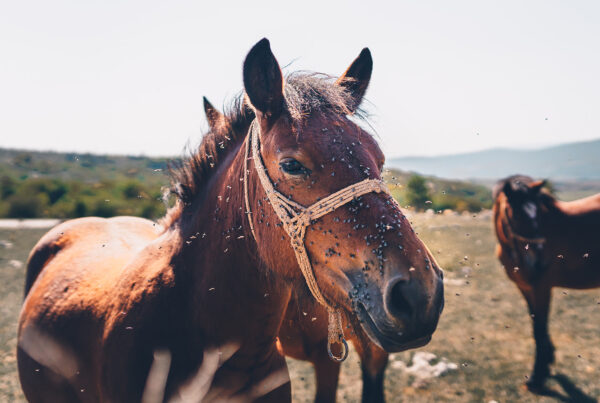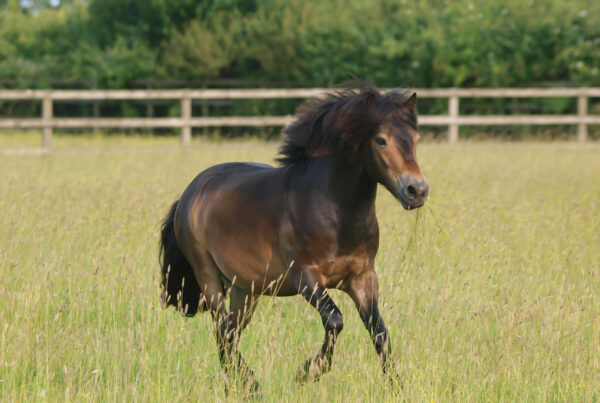Even shire stallions can fall ill despite the best conditions. The caretaker must identify, if not all, then some of the most common health problems horses face. Identifying what these common illnesses are can make you ready for anything serious later that the horse may develop.

The tricky part of being a horse owner is that you have to monitor and treat every symptom cautiously. Even if the signs are there, unless you’ve been a horse breeder for a long time- you won’t notice them. That is why Clarendon Equine has compiled a list of common horse health problems.
1. Back Problems
Back problems aren’t much of a surprise when it comes to horses and ponies. Usually, they may develop when a horse falls or rolls and happens to pull a muscle or ligament. Sometimes, a horse can have back problems due to ill-fitting saddles.
For example, if the saddle doesn’t fit well, the rider may end up hurting the horse or lose their balance- which can induce equine thoracolumbar pain or, in other words, arthritis. The spine can become tender and painful over time.
You may notice heat or swelling over the affected area. It’s essential to contact an equine veterinary services centre so that a vet can adequately assess your horse’s back problem.
For an accurate diagnosis, they can proceed to do an x-ray examination or ultrasounds if necessary. Lastly, the combined effort of a farrier and the vet can treat the back problem. However, if the problem persists, a professional saddle fitter may be involved later.
2. Arthritis
Arthritis/Osteoarthritis, more commonly known as Degenerative Joint Disease, significantly affects your horse’s range of motion. Your horse may start acting stiff because the affected joints swell over time, appearing much larger than usual. Arthritis is precisely one of the common reasons most horse owners feel the need to retire their horses.
As unfortunate as this may sound, once your horse has arthritis, there is no cure for it. To avoid the possibility of your horse suffering from arthritis, it is better to start taking measures early on. For example, give your horse some time to warm up and settle down. Avoiding hard or uneven surfaces will only bring your horse more comfort, so change where you ride!
Lastly, it is no surprise that being overweight can cause pressure on joints, thus causing pain. Likewise, you have to keep an eye on your horse’s weight.
3. Inflammatory bowel disease
Inflammatory Bowel Disease, or most commonly known as IBD, is a group of internal diseases that cause the digestive system to falter. The spectrum of IBD diseases affects the stomach and intestines and can also affect the skin, respiratory tract, and internal organs. The primary symptoms are chronic weight loss, lack of appetite, diarrhoea, or fever.
Although IBD is rare, it should not be ruled out completely. After checking for all the other symptoms that might cause weight loss and fever, IBD should next be listed. The other symptoms which disrupt the digestive system are foreign body ingestion and displacements, dental disease, gastric ulcers, and worm burdens. You should call an emergency equine vet as soon as you suspect IBD.
The best treatment for IBD depends on the horse as each might react differently to medications.
4. Colic
When a horse does not drink enough, nor follows a proper roughage diet, or has untreated dental problems— colic is bound to happen. Colic is one of the most common health problems that affect the digestive system.
To avoid colic, don’t forget to get your horse’s teeth inspected every once in a while, keep the food supplies and water clean, and make sure that your horse has a well-balanced diet.
If you suspect signs of colic, please call the nearest equine service centre to get professional help. Most equine veterinary clinics can perform check-ups in your yard so, while you are waiting for the vet, you can walk your horse to a large area so that he can roll and reduce the pain.
5. Common Cold
We quickly tend to associate relentless nasal discharge, cough, swollen lymph nodes, edema, depression, and fever with a URT infection. However, during the early stages of developing a common cold, most horses have one clinical sign—fever.
If the fever is high enough, the horse may experience dehydration, anorexia, or inappetence. There’s nothing much to worry about, though. Because most of the time, the fever is so short-lived that it passes by unnoticed.
Once you identify the common cold symptoms, you should call your vet and isolate your horse as this disease spreads quickly within a group.
6. Equine Herpes Virus
Equine Herpes Virus(EHV) is the primary reason for respiratory and neurological problems and abortions. Symptoms usually include nasal discharge, loss of appetite, cough, and fever. Vaccinations are available to fight against the virus and prevent the further spread of the disease. But, it is recommended that healthy horses get vaccinated before they get sick.
If you suspect that your horse may have developed EHV already, call the veterinarian immediately and separate him from all the other horses.
7. Ringworm
Ringworm is caused by a fungus that can spread quickly from one horse to another. Initially, the infection can be seen in tufts of hair that fall off and leave lesions. To avoid ringworms, hygiene should be your number one priority. You should also try and use different tacks for each horse.
If you doubt that one of your horses might have ringworm, your first course of action should be isolating it from others. The same is true if there is a new member: keep him away from the team until you are sure of his health.
The horse can recover with the help of an anti-fungal wash and by clipping the infected hair, and further prevention measures include the proper cleaning of the yard and tack.
8. Mud Fever
Mud fever is associated with humid and muddy conditions where the infection is inflicted by something that survives in the mud. Once the horse is infected, it can develop a fever and later have stomach issues where the stomach becomes inflamed and scaly.
Properly washing the legs and drying them is one of the ways you can prevent a horse from developing mud fever. If you notice an infection on your horse, keeping it clean is imperative. Under the care of a vet, further treatment can be observed to help your horse recover.
Conclusion
These are just some of the common health problems you may have to face with your equine animal. So, in the future, if your horse exhibits any of the symptoms, you will be more than prepared to check for signs. As you learn to check for such symptoms, you will know precisely when to call an equine veterinary service near you and get your horse back on track.
Prevention is always better than curing your equine friends. You can do this by providing them with a healthy diet routine, proper exercise, and giving them the chance to take adequate rest.
However, sometimes we are faced with a dilemma and put off making any decisions. To prevent unfortunate events, we implore you to get in touch with your nearest equine veterinary care centre or contact us for any services or emergencies.









